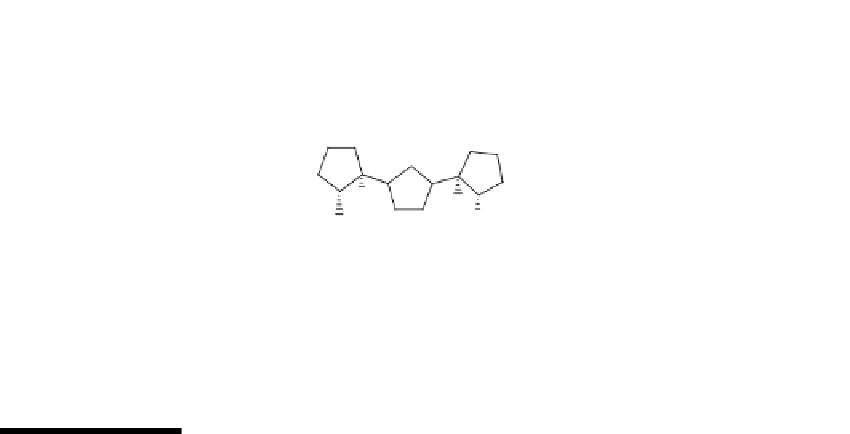Biomedical Engineering Reference
In-Depth Information
the underlying PSi matrix and the reproducibility of the DNA detection. Salt is unfortunately
absolutely required for DNA-DNA hybridization; however, a potential alternative is to use
immobilized peptide-nucleic acid (PNA) probes instead, since their ability to bind DNA is
significantly less salt dependent.
19
We will discuss issues of PSi stability in the presence of salt
and other “environmental” solutes in greater detail later in this chapter.
After producing an initial demonstration of the suitability of PSi microcavities for
biosensing, we next turned our efforts to an examination of the suitability of nonnucleic
acid probes.
20
Because sensing with PSi is “label-free,” meaning that no extraneous
radionuclides or fluorophores are required, this substantially broadens the range of
molecular targets and probes that can be addressed with the technique. Parallel to our
work with PSi, we had developed a synthetic receptor for lipid A. Lipid A is the conserved
head group of lipopolysaccharide, a key diagnostic molecule for Gram-(-) bacteria
21
as
well as one of the primary causative agents of bacterial sepsis.
22
The receptor, dubbed
tetratryptophan-ter-cyclopentane (TWTCP) (1),
23
was immobilized on PSi microcavities
using a procedure analogous to that described above for DNA immobilization. Initial
results proved disappointing: the devices produced in this manner were completely
unable to detect either lipid A or Gram-(
) bacteria. However, on reflection, it was
hypothesized that immobilization of the probe molecules in this manner produced devices
in which the binding surface was occluded either via reaction of all four amino-terminated
“arms” of the receptor with the surface, or simply by crowding or aggregation of the
receptor. Incorporating a large (10:1) molar fraction of glycine methyl ester as a “spacer”
molecule into the probe immobilization step remedied the problem, yielding devices that
were capable of detecting both lipid A and a series of Gram-(-) bacteria (Figure 11.5). No
signal was produced on incubation of the sensor with Gram-(+) bacteria, as one would
expect based on their limited (and essentially inaccessible) amount of lipid A. Thus, we
had demonstrated a PSi-based complement to the venerable “Gram stain,” a 150-year-old
microbiological staining technique that is still in use.
O
O
O
O
O
O
H
2
N
NH
2
O
O
H
H
O
HN
O
H
H
N
H
H
2
N
NH
2
O
O
HN
NH
TWTCP(1)
11.4
From Empirical Observations to Predictable Behavior: Understanding
the Properties of Mesoporous Silicon Biosensors in Greater Detail
While initial results from our laboratories on mesoporous silicon microcavities provided
an indication that such devices could function as biosensors, substantial work remained











